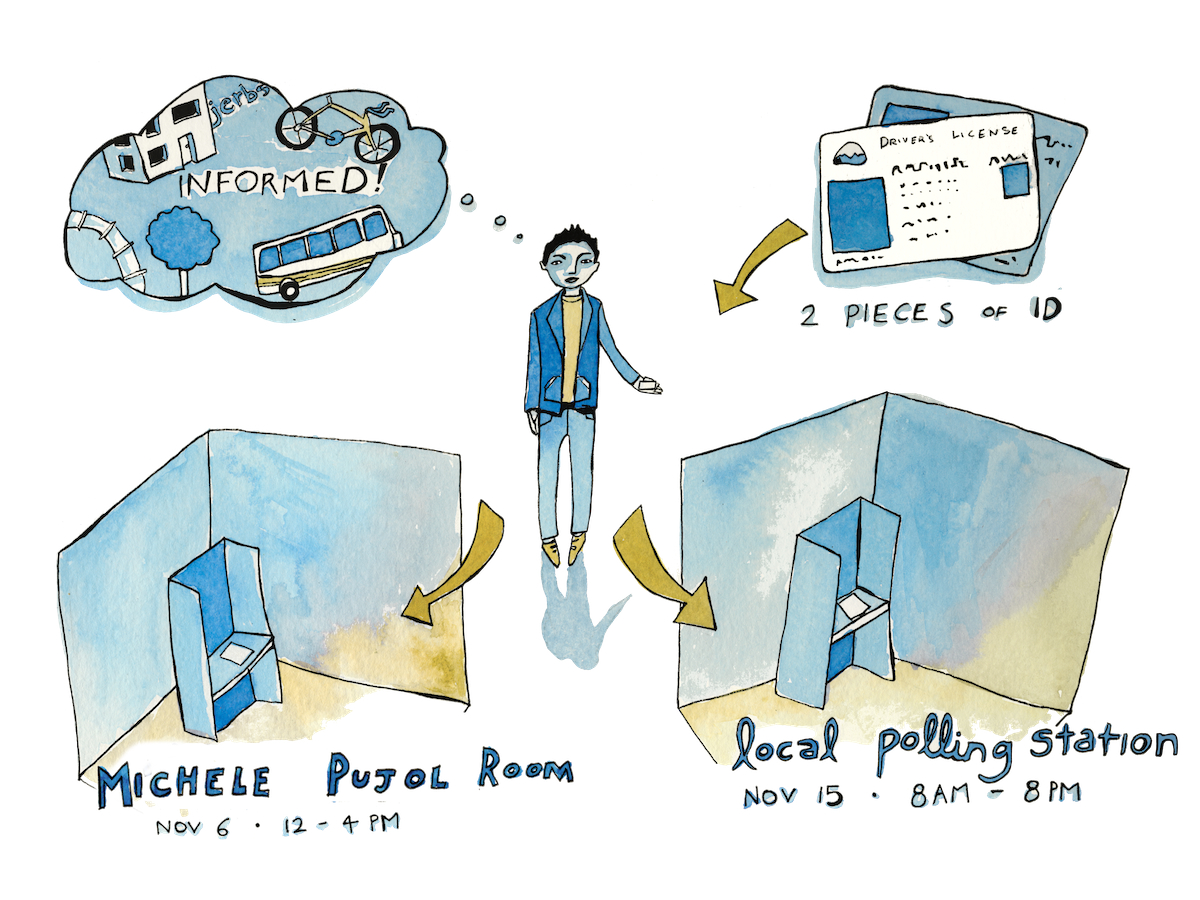General voting day is Nov. 15, but there are other opportunities. There is at least one advance voting day on Nov. 6. Check your municipality’s website for additional voting opportunities.
What’s on the ballot?
Voters will choose one mayor, several city councillors, and school board trustees. In Saanich, Oak Bay, and Victoria, there will be a non-binding question regarding amalgamation (read on). In the case of Saanich and Victoria, there is also an informal poll about who should represent the municipality at the CRD level.
Where can I vote?
Polling stations are likely located in churches, recreation centres, or public schools in your area. Check your municipality’s website for a list of polling stations.
Can I vote at UVic?
Yes. An advance poll for Oak Bay, Saanich, and Victoria will be located in the Michèle Pujol room on Nov. 6 from 12-4 p.m. However, the UVic polling station is only open on the advance voting day: Nov. 6. If you want to vote on Nov. 15—general election day—you have to go to another polling station. Check your municipality’s website for more information.
What are the requirements?
You must be 18 or older, a Canadian citizen, a B.C. resident for at least six months before the election (or your day of voter registration), and have lived in the municipality you intend to vote in for more than 30 days before the election (or your day of voter registration).
What are the residency requirements?
You must vote for the mayor and council that represents the area you live in. If you are unsure of your municipality, click to find links to the Saanich and Victoria voter’s list. Oak Bay does not have an online voter’s list, so find a map of municipal boundaries if you’re not sure.
Generally speaking, you can only vote in one municipality. If you have moved from your hometown to attend school, you must choose which district you wish to vote in.
If you are still uncertain, check with your municipality.
How many candidates can I choose?
You may not vote for more candidates than there are vacancies (so no voting for three mayors), but you’re free to vote for fewer candidates.
What’s appropriate ID?
Voters must bring two of the following pieces of ID to vote. Together, these two documents must contain your signature and address. This is an incomplete list; for the complete list, check with your municipality:
- B.C. driver’s license
B.C. identification card
A student card issued by a post-secondary institution
Canadian passport
Certificate of Indian Status
B.C. CareCard
Social Insurance Number card
B.C. government cheque
Canadian Force
A debit or credit card from a Canadian bank or credit union with a visible signature
Utility bill
Greater Victoria Public Library card
If you don’t have anything proving your address, you have to show two pieces of identification, one with your signature, and make a solemn declaration that you actually live where you say you live.
As of press time, the Martlet was unable to confirm that all three municipalities would accept tenancy agreements as proof of address, so make other arrangements if possible.
What about amalgamation?
Saanich, Oak Bay, Victoria, and other municipalities will include non-binding questions on their ballots asking the electorate for their views on reducing the number of municipalities in the Greater Victoria area, known as amalgamation. Supporters of amalgamation believe that the CRD’s 13 municipalities could be combined to save money, as the Greater Victoria area is currently governed by 91 mayors and councillors, which some view as excessive. Opponents believe greater amalgamation would make governing more difficult, as areas like Langford may have to agree with Oak Bay on matters of development depending on the model of amalgamation chosen.
However, this vote will not determine whether the CRD will amalgamate: it is meant to gauge public support for the idea in general.
Who should I vote for?
With the sheer number of candidates for mayor and council in three municipalities, we can’t go over candidate platforms in detail here. However, there are many opportunities and venues to learn more about candidates. Each week, the Martlet has been profiling a random selection of mayoral candidates and will continue to do so until election day.
Sources of information include:
- Other local media outlets (Times Colonist, Black Press papers, etc.)
uvicvotes.ca (a website created by the UVSS containing Q&As with candidates)
Official candidate websites and social media pages
Candidate debates and forums.
For students, pay particular attention to campaign promises regarding affordable housing, employment opportunities, and transit. Sewage treatment, the Johnson St. bridge, and a proposed deer cull are also contentious issues. For those running for re-election, examine their past actions on these issues, and see if they are in line with your own beliefs.
Correction: The original graphic erroneously stated the location of the advance poll at UVic. It is in the Michele Pujol Room, not Vertigo. The graphic has been amended to reflect this.









